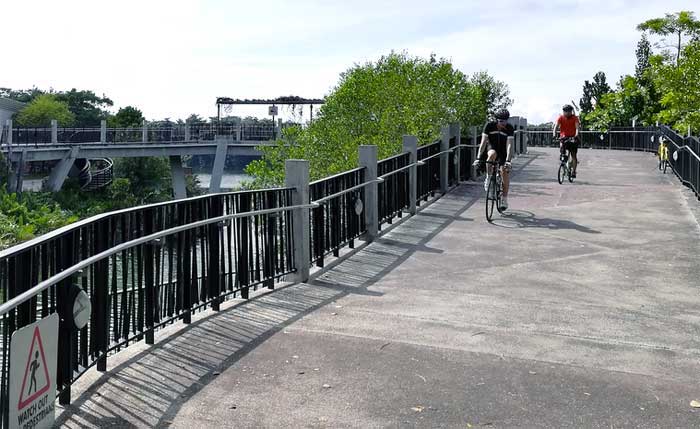The government if Singapore will provide incentives to developers so as to ensure the facilities being developed are equipped with bicycle parking, locker rooms and showers. This is a part of the plan of the government to promote walking and cycling. This will benefit the developers very much as the floor area that will be required to provide these facilities will be provided to them free. The Urban Redevelopment Authority has already declare that they are prepared to provide exemptions to gross floor area for these facilities.
The government's plan to promote walking and cycling is complimented perfectly by the exemption provided by the URA. The plan dictates that ever building erected onwards from July of this year will be required to have walking and cycling facilities. It is the government's belief that this will make walking and cycling more attractive to its people. This may make them opt to ride or walk to conserve energy or at least make it a part of their daily commute.
Parliament was recently told about the requirements developers will soon need to follow as it relates to building standards for bicycle parking by the Ministry of Transport. They were also reminded of the requirements for car parking. Developers such as Evia Real Estate believe that these requirements of the government's plan for facilities will put further strain on developers who already have a tedious time as it relates to space constraints. The developer argue that the rules of the URA requires every development area to reserve up to forty percent of the area to be used as greenery. This leaves them little to nothing in terms of space to do anything else. The actual cost for construction may not be as significant but for supporting services such as staircases and ramps are and they cost quite a bit.
Ground space is highly profitable for developers and since the proposed area for these facility will be on the ground level, the divisional director of Benoy, architecture firm Mr. Terence Seah argues that developers will lose significantly by giving up such prime space for the facilities. If some sort of incentive is offered to these developers it will make it a lot easier for the developers to agree to the plan and its requirements.
As it stands now the plan only applies to commercial developments such as school buildings, shopping complexes, office buildings and business parks. The ST does understand that residential developments will to have to conform to this plan eventually as well. Experts believe that the Walking and Cycling plan could inspire new architectural constructs due to the increase of cycling by the people. This could eventually change the entire streetscape providing more paths and ramps for cyclist and for those who use some other mobility device.
Professor CheahKok Ming an associate professor of the National University of Singapore believe that the plan could increase the amount of counters in a building that cyclist will use to do simple repairs to their cycles or to simply pump their tyers. The professor is a part of the Architecture department and he states that the government should be aware that they need certain thing in place for this plan to really take root and bear fruits. Developments will need to be highly connected in order to develop a network dedicated to walking and cycling. This will be needed if the governments intends to promote walking or cycling as the mode of transport. The professor also elaborated on the fact that there is no way to provide safety for a cyclist to enter and exit a building safely it the surroundings of the building are not designed and constructed well and with these commuters in mind.

